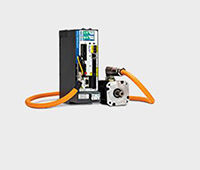Bal Seal Engineering, Inc. has expanded its line of seal materials to include P78, a high-temperature, high-performance thermoplastic, and P240, a lubricated, fiber-reinforced version of P78. The company says the properties of the new materials make them ideal for use in the chemical processing and petrochemical industries and in applications requiring excellent wear resistance at extremely high temperatures. 
Bal Seal Engineering, a global provider of custom-engineered sealing, connecting, conducting, and EMI shielding solutions, says P78 and P240 exhibit exceptional heat resistance and minimal wear with excellent load-carrying capabilities at extreme temperatures. Both of the compression-molded materials have a maximum service temperature of 650 °F (343 °C). However, depending on the application, effective sealing at even higher service temperatures may be achieved. Compatible with ketones, hydrocarbons, and ethers, the materials offer excellent ultrasonic transparency as well as excellent retention of tensile strength, compressive strength, elongation, and hardness over 400 °F (205°C).
The materials are suitable for applications such as electrical connectors, bearing seals, bushings, and valve seats. P78 is particularly suitable for use in simple support rings whereas P240 is ideal for high-temperature seals in addition to support-ring applications where the ring may come into contact with a dynamic part. Both materials are suitable for rotary or reciprocating applications.
The company says it added the new materials to its offering in answer to a growing demand for sealing options that could withstand the increasingly extreme temperatures in petrochemical and chemical process applications.
“Petrochemical OEMs are faced with harsh environments,” says Jim Harty, Global Energy Market Manager for Bal Seal Engineering, “and that has driven a need for seal materials that are up to the challenge. We’ve formulated P78 and P240 to provide sustained sealing in extreme temperature applications with minimal wear and superior load-carrying capabilities, so that design engineers can achieve new levels of performance and efficiency without worrying about whether the seals in their equipment can keep up.”
Bal Seal
www.balseal.com
Filed Under: MOTION CONTROL





Tell Us What You Think!